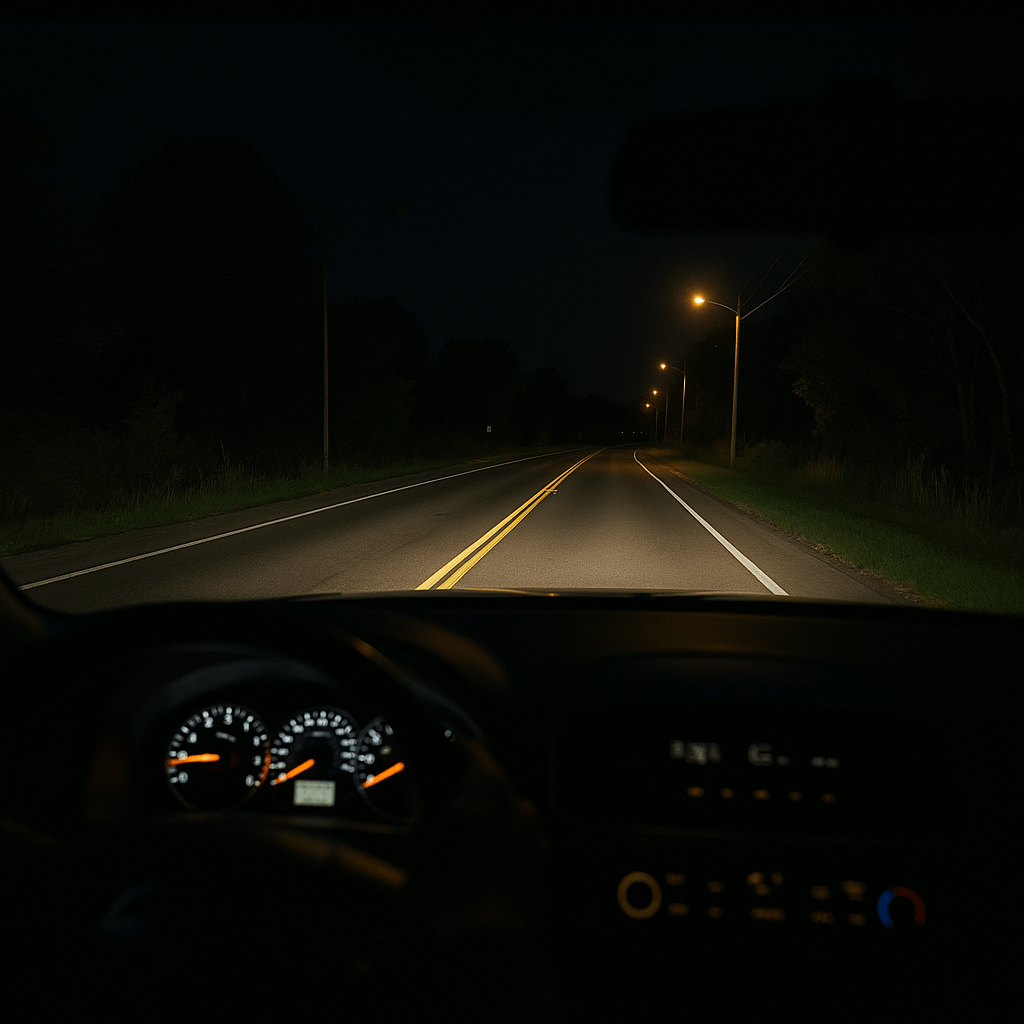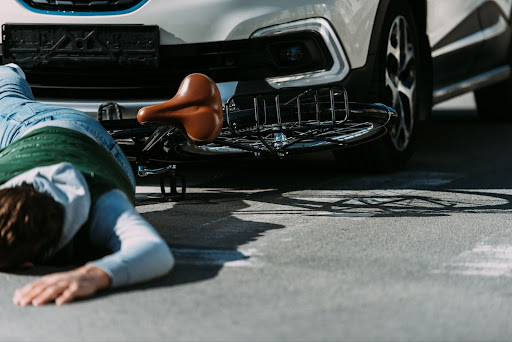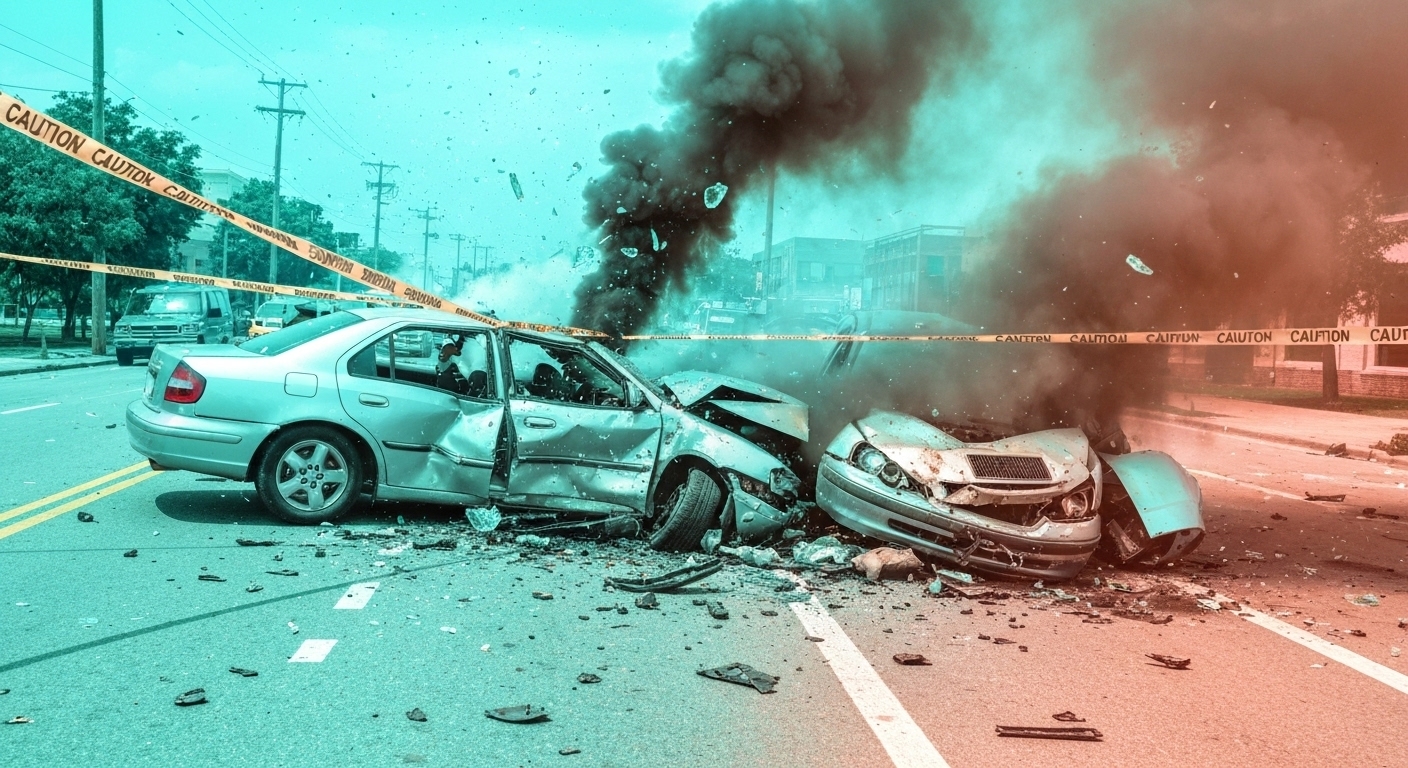Driving at Night Is Riskier Than You Think
Night driving accounts for only about 25% of all travel in the U.S., yet nearly 50% of fatal crashes happen after dark. That’s a sharp contrast and one worth paying attention to. Whether you’re commuting home, heading out for a late shift, or just running a quick errand, the risks of driving after dark are higher than most people realize.
Night driving safety isn’t just about seeing clearly. It’s about reducing the risk of fatigue, avoiding impaired drivers, and staying alert in low-light conditions. If you’re not thinking actively about how to stay safe at night, you’re more vulnerable than you think.
Let’s walk through exactly how you can reduce those risks and protect yourself and your passengers every time you hit the road after sunset.
Why Night Driving Is More Dangerous
Night driving presents multiple layered risks that don’t exist, or are much less severe, during daylight hours. These challenges affect your ability to react quickly, interpret road conditions, and make safe driving decisions. Below are the four key dangers of driving after dark and how they affect you.
1. Reduced Visibility
At night, your field of vision is significantly limited. Your headlights only light up a portion of the road, which means objects or hazards farther out remain hidden until you’re already close.
On average, low-beam headlights allow you to see about 160 to 250 feet ahead. High beams extend visibility to around 500 feet. When you’re driving at highway speeds, this gives you very little time to react.
The human eye is not built for low-light conditions. Peripheral vision, depth perception, and color recognition all decline in the dark.
Weather conditions like rain or fog make visibility even worse. Signs and road markings also become harder to see, especially when they’re worn or poorly illuminated.
2. Fatigue
Fatigue is a major factor in nighttime crashes. The body’s circadian rhythm naturally makes people feel drowsy after dark, especially between midnight and 6 a.m. The longer you’ve been awake, the worse your reaction times and decision-making abilities become.
According to the National Safety Council, driving after 20 hours without sleep is equivalent to driving with a blood alcohol concentration of 0.08 percent, which is the legal limit for impairment in most states.
Sleep-deprived drivers are three times more likely to be involved in a crash. And unlike alcohol, drowsiness doesn’t always come with obvious signs. You might not realize how tired you are until it’s too late.
3. Impaired Drivers
Nighttime is when the highest number of impaired drivers are on the road. The hours between 9 p.m. and 3 a.m. are especially dangerous. According to data from the National Highway Traffic Safety Administration, 68% of all fatal crashes involving alcohol impairment occur at night.
Driving under the influence of alcohol or drugs reduces motor skills, delays reaction time, and affects judgment. Unfortunately, the danger doesn’t come just from your own condition. Sharing the road with others who are impaired puts you at risk even if you’re fully alert and sober.
4. Glare from Headlights
Oncoming headlights and reflections from streetlights or wet roads can temporarily blind you or cause you to miss critical road details. This glare reduces contrast and makes it hard to see pedestrians, signs, or animals near the roadway.
Drivers with aging eyes are especially affected. Recovery time from glare increases with age, and vision sharpness in low-light conditions tends to decline gradually after age 40.
The effect is even more pronounced if your windshield or glasses are dirty or scratched. Glare can cause momentary disorientation, which is dangerous at any speed.
Visibility Tips for Night Driving
Good visibility is your top defense at night. Here’s how to keep your view as clear as possible:
- Keep windows clean, both inside and out. Dirt scatters light and increases glare.
- Replace worn wiper blades. Poor windshield clearing makes it harder to see during rain or snow.
- Keep headlights clean and aimed properly. Dirt and misalignment can cut your visibility in half.
- Avoid tinting your windshield or front side windows. It limits visibility even further at night.
Managing Fatigue at Night
Tiredness reduces reaction time and judgment. Here’s how to stay alert:
- Take regular breaks during long drives, at least every two hours.
- Avoid heavy meals before driving. They can make you sleepy.
- Limit alcohol completely. Even small amounts can increase drowsiness.
- Don’t rely on coffee or energy drinks. They wear off and give a false sense of alertness.
According to the AAA Foundation for Traffic Safety, drivers who sleep less than 5 hours are 4.3 times more likely to crash.
Using Headlights Properly
Your headlights are your main tool at night, but only if they’re used the right way:
- Turn them on 30 minutes before sunset and keep them on until sunrise.
- Use low beams in traffic or fog. High beams reflect off fog and worsen visibility.
- Use high beams on dark rural roads, but dim them when other cars are nearby.
- Check for signs of misalignment. If one side of the road is lit more than the other, have them adjusted.
Avoiding Distractions After Dark
Distractions are dangerous during the day. At night, they’re worse. Your reaction time is already compromised by low light. Here’s how to stay focused:
- Put your phone away. Even one glance can mean missing a curve or pedestrian.
- Set GPS and music before driving. Adjusting them while moving pulls your eyes from the road.
- Limit conversation if you’re tired. Talking keeps your brain busy when it should be on alert.
Dealing With Glare From Oncoming Cars
Glare from headlights can blind you temporarily and create dangerous blind spots:
- Avoid staring at oncoming lights. Look slightly to the right edge of your lane.
- Keep your dashboard dim. Bright interiors make it harder to see in the dark.
- Use the night setting on your rearview mirror. Most cars have a flip switch.
- Don’t wear glasses with scratches or dirty lenses. They scatter light and worsen glare.
As you age, glare becomes harder to recover from. Drivers over 60 can take twice as long to recover from headlight glare compared to younger drivers.
Actionable Night Driving Safety Tips
- Clean your windshield and mirrors
- Check and align your headlights
- Reduce speed and increase following distance
- Avoid looking directly at oncoming lights
- Don’t drive drowsy
- Watch for pedestrians and wildlife
- Limit interior screen and light glare
When a Nighttime Crash Happens
After a crash, your first priority should be safety. Move to a safe area if possible, call 911, and get medical attention. Even if injuries seem minor, symptoms can show up later.
Then speak with a personal injury attorney. Crashes after dark often involve additional factors like poor lighting, impaired drivers, or fatigue-related negligence. These can complicate your case and affect how much compensation you receive.
At Lowe Law Group, we have a full-time medical doctor on staff. Our in-house medical team understands how injuries can affect you long after the crash. We use that insight to calculate the true cost of recovery and fight for full compensation, not just what the insurance company offers upfront.
Contact Lowe Law Group
Night driving safety matters, but even the most careful driver can’t control what others do. If you’ve been injured in a crash that happened after dark, Lowe Law Group is here to help. Our attorneys know how to investigate night-related crashes, challenge insurance company tactics, and pursue the compensation you need to recover.
You don’t have to face this alone. Contact Lowe Law Group today for a free consultation about your legal options.








